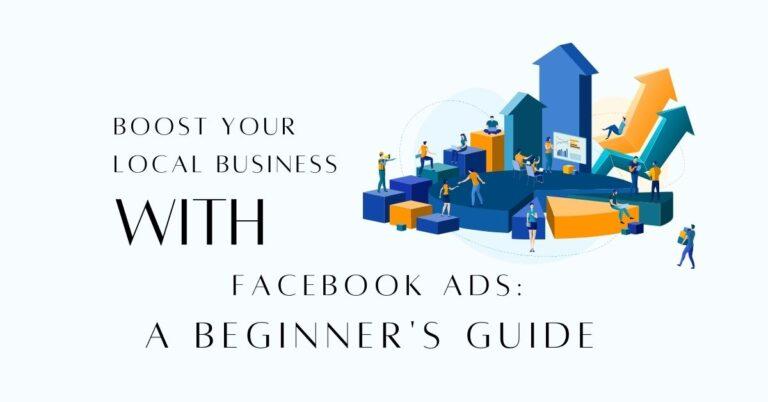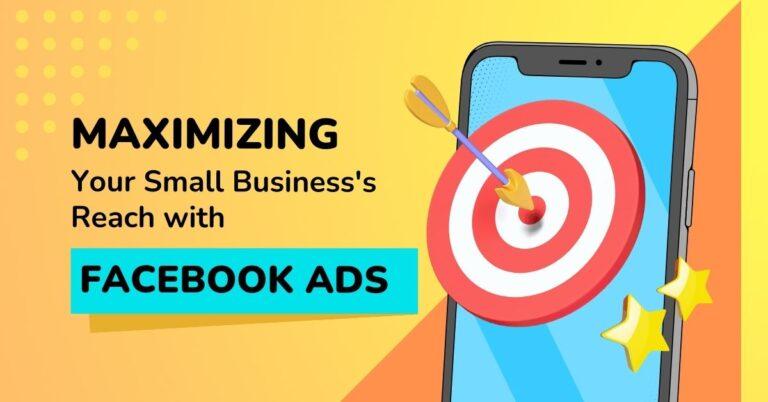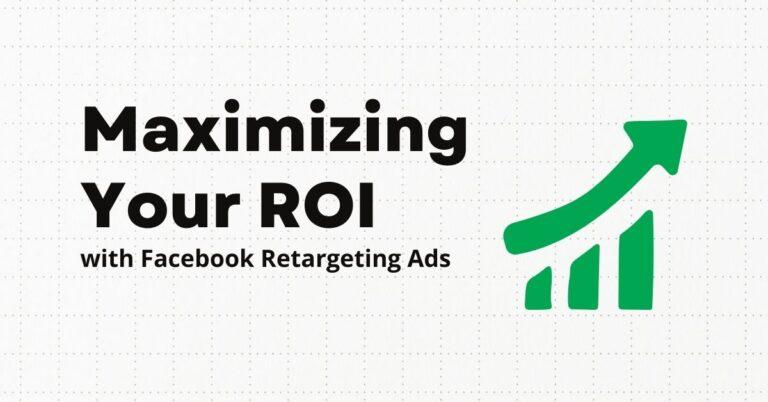As a author and digital marketer, I understand the challenges of reaching and engaging with potential customers in today’s digital age. With so many advertising options available, it can be overwhelming to decide where to invest your marketing budget. However, one platform that has proven to be highly effective for businesses of all sizes is Facebook Ads.
Facebook Ads offer a unique opportunity for small businesses to connect with their target audience in a cost-effective and efficient way. With over 2 billion active users worldwide, Facebook provides an unparalleled reach that no other platform can match. Whether you’re looking to increase brand awareness, drive website traffic, or generate leads and sales, Facebook Ads can help you achieve your goals.
Key Takeaways
- Facebook Ads can be a powerful tool for small business owners to reach their target audience and grow their business.
- Understanding the different types of Facebook Ads and choosing the right ad format for your business is crucial for success.
- Defining your target audience and creating compelling ad content are key components of a successful Facebook Ads campaign.
- Setting a budget and measuring the success of your ads can help you optimize your campaign and avoid common mistakes.
- With the right strategy and approach, Facebook Ads can help your small business reach new heights and achieve your goals.
Understanding the Different Types of Facebook Ads
When it comes to running successful Facebook Ad campaigns, it’s important to understand the different types of ads available and how each one works. There are several ad formats on Facebook including image ads, video ads, carousel ads, slideshow ads, collection ads, lead generation ads, dynamic product ads and more.
For example:
– Image ads are simple yet effective at grabbing attention with eye-catching visuals.
– Video ads allow you to tell a story or showcase your products/services in action.
– Carousel ads enable you to showcase multiple images or videos within a single ad unit.
– Collection ads combine images and videos into an immersive shopping experience.
The type of ad format you choose will depend on your specific business objectives and target audience. For instance:
– Retailers may benefit from using collection or carousel ads as they allow them to showcase multiple products at once.
– Service-based businesses might find lead generation or video ads more effective in capturing potential customers’ attention.
Setting Up Your Facebook Ads Account
Setting up a Facebook Ads account is relatively straightforward but requires careful consideration of various settings for optimal performance. Here’s a step-by-step guide:
1) Create a Facebook Business Page: If you don’t already have one, create a dedicated business page on Facebook. This will serve as the hub for your ads and allow you to build an online presence for your brand.
2) Set Up Your Ads Manager Account: Visit the Facebook Ads Manager website and follow the prompts to set up your account. This is where you’ll create, manage, and track your ad campaigns.
3) Define Your Campaign Objective: Before creating an ad, determine your campaign objective. Are you looking to drive traffic to your website, generate leads, or increase brand awareness? Selecting the right objective will help Facebook optimize your ads for better results.
4) Targeting Options: Use Facebook’s targeting options to define who sees your ads. You can target based on demographics (age, gender), interests (hobbies, pages liked), behaviors (purchase history), and more. The more specific you are with targeting, the better chance of reaching potential customers who are most likely interested in what you offer.
5) Ad Placement: Choose where you want your ads to appear – in users’ newsfeeds or on Instagram or Audience Network. Consider testing different placements to see which ones yield the best results for your business.
Defining Your Target Audience for Facebook Ads
| Metrics | Description |
|---|---|
| Age | The age range of your target audience |
| Gender | The gender of your target audience |
| Location | The geographic location of your target audience |
| Interests | The interests and hobbies of your target audience |
| Behaviors | The behaviors and actions of your target audience |
| Language | The language spoken by your target audience |
| Device | The type of device used by your target audience |
| Connection | The type of internet connection used by your target audience |
Defining a target audience is crucial when it comes to running successful Facebook Ad campaigns. By understanding who exactly you want to reach with your ads, you can tailor both content and targeting strategies accordingly.
To identify your target audience:
1) Analyze Existing Customer Data: Look at data from previous customers such as demographics (age range, location), interests/hobbies they may have mentioned during interactions with them.
2) Conduct Market Research: Use tools like surveys or focus groups to gather insights about potential customers’ preferences.
3) Create Buyer Personas: Develop detailed profiles of fictional individuals that represent different segments of potential customers based on common characteristics such as age, occupation, interests, and pain points.
By creating buyer personas, you can better understand your target audience’s needs and motivations. This knowledge will help you create more relevant and compelling ad content that resonates with them.
Creating Compelling Facebook Ad Content
Creating compelling ad content is essential to capture the attention of your target audience and drive engagement. Here are some tips for writing effective ad copy:
1) Grab Attention with a Strong Headline: Start with a catchy headline that grabs attention right away. Use action words or ask thought-provoking questions to pique curiosity.
2) Keep it Concise: Facebook Ads have limited space for text, so make every word count. Be clear and concise in conveying your message.
3) Highlight Benefits: Focus on the benefits of your product or service rather than just its features. Explain how it can solve a problem or improve customers’ lives.
4) Include a Call-to-Action (CTA): Tell users what you want them to do next – whether it’s visiting your website, signing up for a newsletter, or making a purchase.
5) Test Different Variations: Experiment with different versions of ad copy to see which ones resonate best with your audience.
In addition to compelling ad copy, visuals play an equally important role in capturing users’ attention. Use high-quality images or videos that are relevant to your business and align with the message you’re trying to convey.
Choosing the Right Ad Format for Your Business
Facebook offers various ad formats designed to suit different business objectives and industries. It’s important to choose the right format that aligns with both your goals and target audience preferences.
For example:
– Retailers selling physical products may benefit from using collection ads as they allow users to browse through multiple products within one immersive experience.
– Service-based businesses might find lead generation ads effective in capturing potential customers’ contact information by offering something valuable in return (e.g., a free ebook or consultation).
By understanding the strengths and limitations of each ad format, you can make an informed decision on which one is best suited for your business.
Setting a Budget for Your Facebook Ads Campaign
Setting a budget for your Facebook Ads campaign requires careful consideration of your marketing goals, available resources, and desired outcomes. Here are some steps to help you set an appropriate budget:
1) Determine Your Objectives: Clearly define what you want to achieve with your ads – whether it’s increasing brand awareness, driving website traffic, or generating leads/sales.
2) Consider Lifetime Value (LTV): Calculate the lifetime value of a customer to understand how much you can afford to spend on acquiring new customers.
3) Test with Small Budgets: Start with smaller budgets initially and test different ad variations to see what works best before scaling up.
4) Monitor Performance: Continuously monitor the performance of your ads and adjust your budget accordingly based on their effectiveness.
It’s important to note that Facebook Ads operate on an auction-based system where advertisers bid for ad placements. The cost per click (CPC) or cost per thousand impressions (CPM) will vary depending on factors such as audience targeting, competition, and ad quality.
Measuring the Success of Your Facebook Ads
Measuring the success of your Facebook Ads is crucial in determining their effectiveness and optimizing future campaigns. Here are some key metrics to track:
1) Reach: The number of unique users who saw your ads.
2) Impressions: The total number of times your ads were displayed.
3) Click-Through Rate (CTR): The percentage of users who clicked on your ad after seeing it.
4) Conversion Rate: The percentage of users who completed a desired action after clicking on an ad (e.g., making a purchase).
5) Return On Ad Spend (ROAS): A measure of how much revenue you generated for every dollar spent on ads.
By analyzing these metrics, you can identify areas of improvement and make data-driven decisions to optimize your ads for better performance.
Tips for Optimizing Your Facebook Ads
Optimizing your Facebook Ads is an ongoing process that requires continuous testing and refinement. Here are some best practices to help you improve ad targeting, content, engagement, and conversions:
1) A/B Testing: Test different variations of ad copy, visuals, targeting options to see which ones yield the best results.
2) Retargeting: Use Facebook’s retargeting feature to reach users who have previously interacted with your brand or website.
3) Lookalike Audiences: Create lookalike audiences based on existing customers or high-value leads to expand your reach to similar users.
4) Ad Scheduling: Experiment with different times of the day or days of the week to determine when your target audience is most active and responsive.
5) Landing Page Optimization: Ensure that the landing page users are directed to after clicking on an ad aligns with the ad’s message and provides a seamless user experience.
By continuously optimizing your ads based on performance data and implementing these strategies, you can maximize their effectiveness in reaching and engaging with potential customers.
Common Mistakes to Avoid When Running Facebook Ads
While Facebook Ads offer great potential for small businesses, there are common mistakes that many business owners make when running their campaigns. Here are a few pitfalls to avoid:
1) Poor Targeting: Failing to define a specific target audience can result in wasted ad spend as your ads may be shown to people who have no interest in what you offer.
2) Lackluster Ad Content: Boring or irrelevant ad content will fail at capturing users’ attention. Invest time in creating compelling visuals and persuasive copy that resonates with your target audience.
3) Neglecting Mobile Users: With over 98% of Facebook users accessing the platform via mobile devices, it’s crucial to optimize your ads for mobile viewing and ensure a seamless user experience.
4) Ignoring Performance Data: Failing to track and analyze ad performance data means missing out on valuable insights that can help you improve future campaigns.
5) Overlooking Ad Frequency: Bombarding users with the same ad repeatedly can lead to ad fatigue and decreased engagement. Monitor your ad frequency and adjust accordingly.
By avoiding these common mistakes, you can increase the effectiveness of your Facebook Ads campaigns and achieve better results.
How Facebook Ads Can Help Your Small Business Grow
In conclusion, Facebook Ads offer small business owners a powerful tool for reaching new customers, increasing brand awareness, driving website traffic, generating leads, and ultimately growing their businesses. With its vast user base and advanced targeting options, Facebook provides an unparalleled opportunity to connect with potential customers who are most likely interested in what you offer.
By understanding the different types of ads available on Facebook, setting up an optimized account, defining your target audience accurately, creating compelling content that resonates with them using appropriate ad formats while setting a budget based on your objectives – you can maximize the effectiveness of your campaigns.
Remember to continuously measure the success of your ads using key metrics provided by Facebook’s Ads Manager. By analyzing this data regularly and implementing optimization strategies such as A/B testing or retargeting – you can refine your campaigns over time for better results.
So don’t miss out on this incredible opportunity! Embrace Facebook Ads as part of your marketing strategy today and watch as it helps take your small business to new heights.
FAQs
What are Facebook Ads?
Facebook Ads are a form of paid advertising on the Facebook platform that allows businesses to reach their target audience and promote their products or services.
Why should small business owners use Facebook Ads?
Facebook Ads are a cost-effective way for small business owners to reach their target audience and increase brand awareness. They can also help drive website traffic, generate leads, and increase sales.
How do Facebook Ads work?
Facebook Ads work by targeting specific audiences based on demographics, interests, behaviors, and more. Advertisers can create ads in various formats, such as images, videos, and carousel ads, and set a budget and bidding strategy for their campaigns.
What types of Facebook Ads are available?
There are several types of Facebook Ads available, including image ads, video ads, carousel ads, slideshow ads, collection ads, and more. Each ad type has its own unique features and benefits.
How much do Facebook Ads cost?
The cost of Facebook Ads varies depending on factors such as the target audience, bidding strategy, ad format, and budget. Advertisers can set a daily or lifetime budget for their campaigns and choose between cost per click (CPC) or cost per impression (CPM) bidding.
How can small business owners measure the success of their Facebook Ads?
Small business owners can measure the success of their Facebook Ads by tracking metrics such as reach, engagement, clicks, conversions, and return on ad spend (ROAS). Facebook Ads Manager provides detailed analytics and reporting tools to help advertisers optimize their campaigns.
Thank you for reading! Share your experiences and questions in the comments below!




